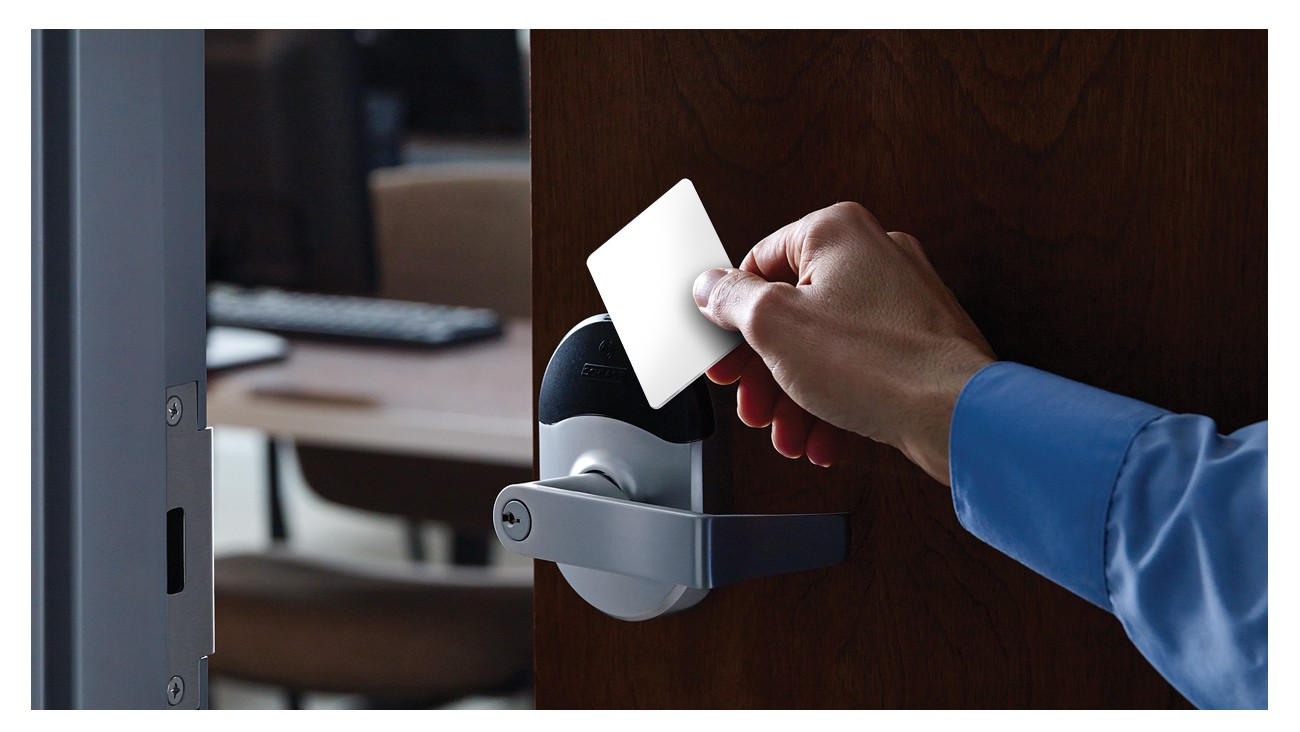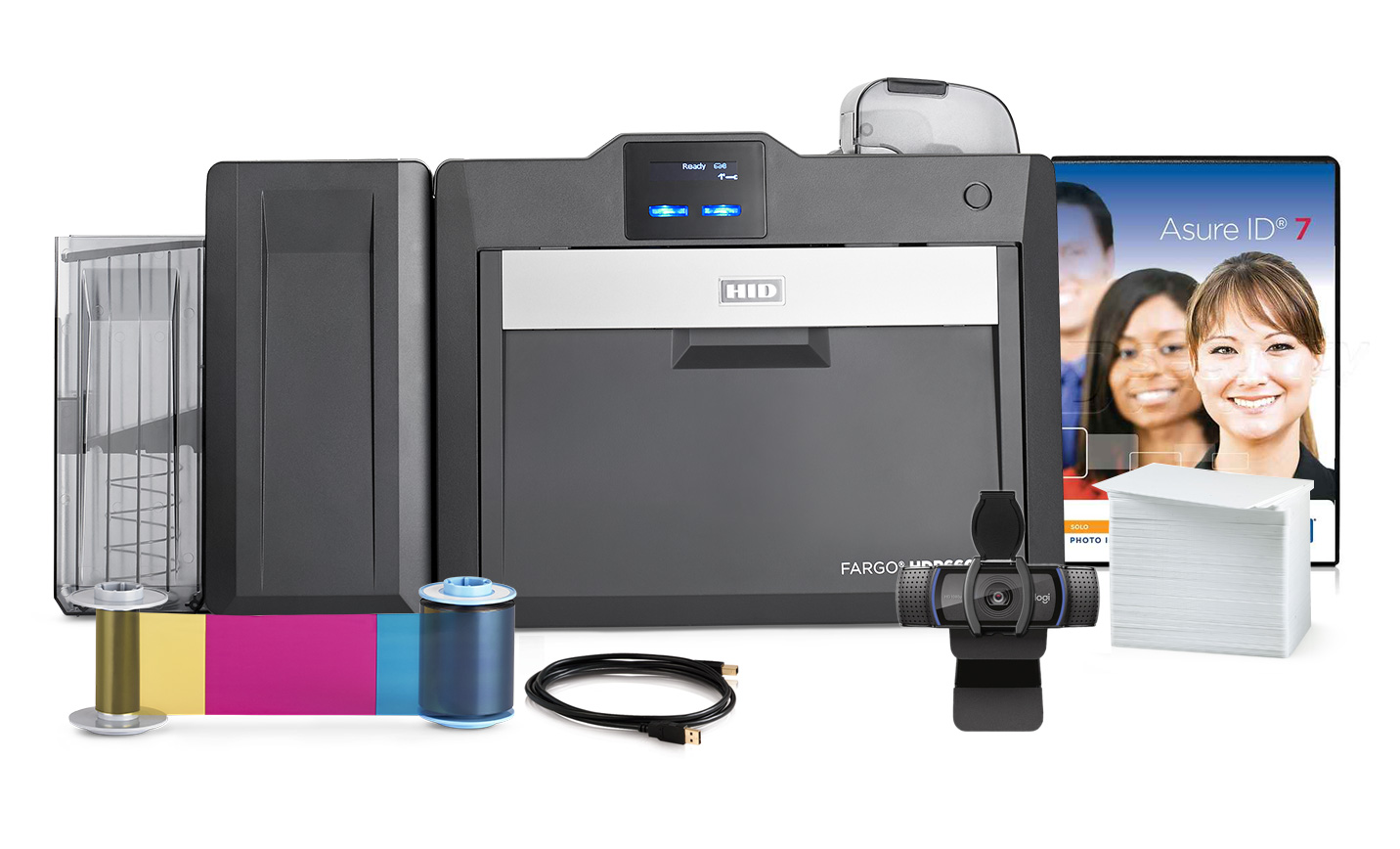
HID Security Card Systems have become the industry standard for advanced Physical Access Control Systems (PACS) and paved the way for organizations to bolster their security framework considerably. Leveraging sophisticated technology, an HID security card system enables comprehensive access control with secure identification, combining efficiency with unparalleled security.
So, what sets the HID security card system apart from the rest?
What truly distinguishes the HID security card system from others is its blend of advanced technology, personalization, and versatility. The issuance of an HID Prox card to each employee guarantees unique identification, thereby significantly enhancing security control. Compared to standard key-based systems that risk unauthorized duplication by locksmiths or even kiosks. HID Prox cards offer a proprietary technological solution with unique digital identifiers, making duplication nearly impossible when combining advanced encryption using iClass Seos.
In addition, the personalization feature, achieved through an HID FARGO card printer, lends itself to an added layer of security. Full-color images printed on the cards facilitate immediate visual identity verification, reducing the chance of fraudulent access.
Moreover, the system’s flexibility allows it to cater to the unique needs of any organization. Through adjustable access rights and schedules, organizations can tailor the system to their exact requirements, adaptability that positions the HID security card system a cut above the rest.
The four crucial components of HID security card system

To fully appreciate the sophistication and efficiency of the HID security card system, it’s essential to understand its key components. These include the Access Control Card, Card Reader, Controller or Access Control Panel, and User Interface Software, each playing a unique role in ensuring secure and seamless access control.
Access Control Card
The Access Control Card carries a series of binary numbers that uniquely identify the cardholder and authorize entry. Each person needing access is issued their own credential which is often personalized with their photo for easy identification in the system database. HID offers a diverse range of access control card types and contactless smart cards, each capable of carrying unique data that can be programmed and encrypted for a given facility. Many larger companies with multiple locations rely on the HID Corporate 1000 program to ensure unique formats are protected across a global organization with no duplicate numbering. A single HID access control card can encompass two or more RFID technologies. For example, it’s not uncommon with some government applications to find contactless smart cards with proximity antenna and a contact smart chip.
Card Reader
Next in line is the Card Reader, designed to read data from the card and pass it over to the controller. The card reader is mounted on the wall or built into the door lock mechanism so that cardholders can wave their card to request access. HID card readers can be built with multiple technologies configured to read specific access badge formats tied to the preferred card types including prox iClass and Seos. Once decrypted, this data is converted into Wiegand Protocol, which is then transmitted to the controller.
Controller or Access Control Panel
The Controller or Access Control Panel is the brain of the system and plays a critical role in determining access. Upon receiving data from the reader, the software processes the information. The code length is analyzed, broken down into component parts, and if the facility code, site code, and card number are accepted, access is granted. This versatile system also offers the flexibility to restrict entry to specific individuals at predetermined times. In traditional installations, the controller manages input from multiple readers and validates entry using permissions stored in its memory. In newer applications, the controller can be built into the lock mechanism or mounted over the door and communicates by wifi back to the software in the cloud or on a local area network (LAN).
User Interface Software
Finally, the User Interface Software facilitates system administration. This software allows operators and administrators to add or remove cardholders, adjust access rights, create and modify schedules, configure hardware for alarm points and doors, monitor real-time events, and generate reports. As the industry’s largest manufacturer of access control hardware, HID does not produce PACS software, rather they partner with developers to work with their products. Newer installations are likely to store security system data in the cloud where legacy applications typically have a dedicated PC that is managed locally.
What benefits does an HID security card system bring to organizations?
Enhanced Security
HID offers a far superior security level compared to traditional lock-and-key methods. By issuing individualized access cards, organizations can control who enters specific areas, minimizing unauthorized access. By relying on electronic controls, all details are logged in a database for review by reports and analytical tools.
Flexibility and Customizability
The HID security card system is incredibly adaptable. It can be configured to restrict access to certain areas at specific times, making it ideal for businesses of all sizes and types. Applications have the option of using printable HID security cards, key fobs or mobile ID as their credential for access.
Efficiency
The process of granting or denying access becomes swift and efficient. Lost cards can be deactivated promptly, and new ones issued with ease, reducing the downtime and potential security breaches. As one of the most established companies in the industry, HID card security products are known to last well over a decade.
Accountability
The HID security card system records each access attempt, offering a clear audit trail. This accountability can deter internal theft and provides essential data during investigations. Since each user has a unique credential, security teams can identify who is requesting access to any physical point of entry.
Personalization
By printing full-color images on the cards using an HID FARGO card printer, organizations add an additional layer of identity verification, reducing the likelihood of fraudulent activities. This information is backed up in the database for easy verification that the person gaining access matches the image on file.
What type of organizations benefit most from HID Security Card Systems?

A wide array of organizations across various sectors can significantly benefit from adopting HID security card systems, but the following organizations may see the most benefit:
Corporations
Corporations and Businesses, particularly those handling sensitive data or valuable assets, can leverage this system to control access to certain areas of their buildings. These could include logistics companies, financial institutions or biotech & pharmaceutical manufacturers.
Government Organizations
Government entities often house classified information requiring high levels of security. HID security card systems can help these entities maintain controlled access, ensuring only authorized personnel can access specific sections. These departments regularly need to identify permanent employees vs contractor staff vs visitors with different types of secure identification issued to each classification.
Colleges and Universities
Higher Educational institutions, such as universities and colleges, use HID card security systems to secure dormitories, libraries, labs, and other facilities. These cards are mostly known for student identification and automation, however badges are also issued to staff and employees to control access to physical and digital assets that support the entire education process.
Healthcare Facilities
Healthcare facilities, like hospitals and research labs, benefit from HID systems by protecting patient data, controlling access to drug storage areas, and ensuring secure areas remain accessible only to authorized personnel. HIPAA and other industry compliance, require healthcare organizations to implement multiple layers of security, not just physical access control, including two factor authentication, visible employee badges and visitor management.
Manufacturing & High Tech Industries
Manufacturing facilities use multiple security systems to limit access to areas housing proprietary materials and processes in addition to potentially dangerous machinery. This ensures only trained personnel can enter these areas which protects companies from stolen trade secrets in addition to liability on the production floor.
Start Implementing Your HID Access Control System Today
In summary, the HID security card system’s advanced technology and multi-faceted capabilities make it an invaluable asset for organizations aiming to achieve robust, efficient, and customizable security solutions. No matter your organization’s size or type, upgrading your access control system can provide enhanced security, flexibility, and efficiency. Contact our team at ADVANTIDGE today to learn more about how we can provide enhanced security, flexibility, and efficiency for your organization.


